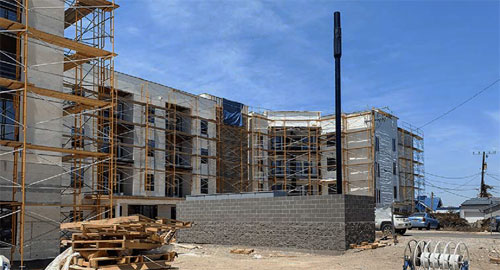By Brice Wallace
Want to buy a new home? Good luck finding one. An existing home? Ditto. An apartment to rent? Same.
That’s the current environment in Utah’s housing market, according to experts speaking at the recent Ivory Institute webinar looking at Utah’s housing market and economy. High demand for existing and new homes, plus low vacancy rates for rentals, have left people scrambling to find a place to live.
“In every case, it shows stress,” Jim Wood, Ivory Boyer Fellow at the Kem C. Gardner Policy Institute, said of housing options.
The number of days on the market for existing homes in Wasatch Front counties shrunk from 20 days a year ago to six days in this year’s second quarter. It was seven days in the third quarter. As for new homes, there’s not much unsold, vacant inventory, “and builders are going full-tilt,” Wood said.
“It’s an unhealthy situation, really,” he said. “We’ve made some progress the last couple of years and we’ve had more new housing units than households, so it should ease, and we expect that to be the case going forward the next few years. But it’s going to take a while.”
Because of supply chain disruptions, builders are facing challenges getting materials needed to build homes, and they’re also facing labor shortages. Combined, those issues are increasing the timeline for construction.
All that said, Wood said Utah is not facing a housing “bubble” such as the one in the 2008-11 period. Whenever Utah had housing price spikes, it was followed by price moderation. The bubble caused a price run-up but a prolonged decline in housing prices — 15 straight quarters — coming at a time of severe job losses, household balance sheets being “out of whack” and a troubled global financial market, he said.
“The reason I don’t think we’re going to have a housing bubble — that is, declining prices for a prolonged period — is I think we’d have to have a really severe recession, and we don’t have the exposure in terms of household balance sheets and the global financial markets that really led to that financial crisis and Utah’s only housing bubble,” Wood said.
Another key difference now is no excess housing supply, said Clark Ivory, CEO of Ivory Homes.
“There’s not that speculative inventory that’s sitting there vacant, waiting to be sold,” he said. “Right now, we’ve got just the opposite, just this feeding frenzy, these people who are trying to find something that’s completed, ready to be moved in, and there’s not enough existing or new construction available to them right now, so it’s very tight.”
Wood worries that with the median sales price for a new home in Salt Lake County being about $550,000, future generations won’t be able to afford to live in Salt Lake City.
Prior to COVID-19, about 45 percent of local households were priced out of the housing market, according to Dejan Eskic, senior research fellow at the Gardner Institute. That’s now up to 55 percent, but that has created “ample” demand for homes priced between $400,000 and $550,000, he said.
To help meet that demand, Ivory Homes expects 36 percent of its total homes to be sold in 2022 to be priced between $500,000 and $599,000.
“I think going forward we’re going to be able to sell a lot of homes in that $500,000 price range and below to these buyers who are able to qualify because of higher incomes and because these [interest] rates are so amazing,” Ivory said.
Utah currently has a ton of young homebuyers, Eskic noted. It is second among states with 32 percent of total buyers being between 25 and 34 years old. It is top-ranked with 11 people per 1,000 in that group buying a home in 2020.
“We’re actually in the best patch demographically as a country and as a state,” he said. “We have a steady stream of housing demand for the next several years. The housing demand is there, where in the previous housing crash we did not have these strong demographics. … So the challenge really becomes about affordability rather than demand going forward.”
As for 2022, buyers can expect interest rates of 3.5 percent to 3.75 percent (it was nearly 5 percent as recently as 2018), Eskic said. Prices will increase 3.5 percent to 7.2 percent. But rents could jump 10 percent to 15 percent.
That rental boost “is going to make buying a home seem really attractive to a lot of people, and I think it’s going to be very interesting to watch because that’s a big rental increase,” Ivory said. “And that’s going to cause people to say, ‘Do I really want to keep writing out that large a check, or am I going to go out and find a new home?’”
The number of local housing permits should reach 36,000, but that’s only a 1 percent increase from 2021’s number. “Any builder who tells you they’re going to grow substantially next year,” Ivory said, “has I think sort of lost it.”
Ivory Homes should see its closing numbers be its highest ever because it will be completing homes the company started building in 2021, he said.
“2022 is going to be a very interesting ride,” Ivory said of the overall Utah housing market. “I think we all agree that the past two years, we’d like to put behind us. We’d like to see them in the rear-view mirror. We’re not quite through with this COVID pandemic. There’s still a lot of challenges and repercussions that will be felt in this coming year and perhaps even beyond. But hopefully we’ll start to feel some kind of normalcy.”








